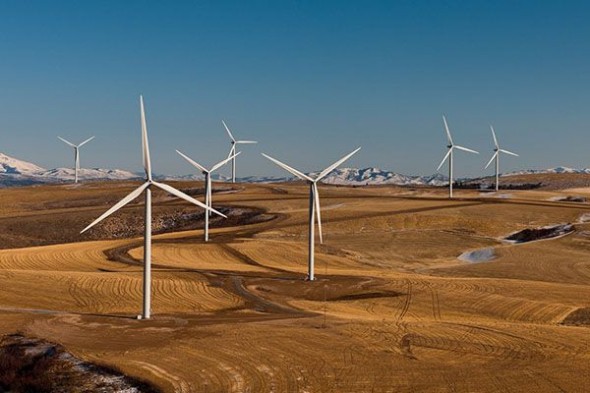Where Our Energy Comes From: Columbia Gorge Wind
Posted on March 23, 2021 by Will Gehrke
Tags, Energy

Where does our energy come from? Here at CUB, much of our work is predicated on the belief that shedding light on this question for utility customers is good for their consumer interests. Since the construction of the John Day and Bonneville Hydroelectric Dams, the Columbia Gorge has been a major source of power for Oregonians. But over the past two decades, another source of energy in the region has grown significantly: wind power.
The Columbia River Gorge is a canyon of the Columbia River. Located on the Oregon and Washington border, the Columbia River has created the Columbia Gorge through erosion over millions of years. The Columbia River creates a water link between the eastern and western portions of Oregon and Washington. In addition to the river’s ecological benefits and its value as a shipping corridor, the Columbia is a hotspot for kiteboarding, parasailing, and similar water sports. The same geographical features that attract enthusiasts of these sports make the Columbia Gorge a prime location for wind power development.
Wind is caused by differences in air pressures and/or air density. Air moves to equalize a difference in pressures between two areas. High-pressure air is more densely packed than low-pressure air, so air in high-pressure zones tends to spread to low-pressure zones. In the Pacific Northwest, there is a pressure difference between the cool moist air over the Portland Metropolitan Area and the hot, dry air over the arid land east of the Cascades. In order to equalize the pressure difference, the cold air moves under warm air through the Columbia River Gorge, which creates wind.
In the past two decades, hundreds of turbines have been installed in the Columbia River Gorge to harness this wind. The owners of these turbines vary. Private companies and California, Oregon, and Washington utilities own wind farms in the region. Pacific Power owns and operates two of these: Leaning Juniper and Goodnoe Hills. The Leaning Juniper has a nameplate capacity (the maximum output of an energy generating resource under specific conditions designated by the manufacturer) of 67 megawatts, and Goodnoe Hills has a nameplate capacity of 103 megawatts. These wind power plants were rebuilt very recently - for more information, see CUB’s March 2019 blog post on PacifiCorp repowering. Portland General Electric owns a single wind farm - the Biglow Canyon Wind Farm - which is located in Sherman County, Oregon. Biglow Canyon’s nameplate capacity is 450 megawatts.
Wind power is an attractive energy source because of its lack of fuel costs. However, wind power is not a perfect energy source. It is difficult to forecast wind production. Wind cannot be stored and its speed cannot be controlled. However, Columbia Gorge wind resources’ location on Bonneville Power Administration (BPA)’s system enables power system managers to address wind’s variability. Electricity generation must match loads in a power system at all times. BPA provides integration services to wind generation in the Columbia River Gorge. Wind integration services is a technical term for energy services that work to compensate for the challenges inherent to wind power described above. For a fee, BPA provides all of these services to wind power plant owners. One important integration service is the generation imbalance service. When wind does not produce as expected by forecasters, the wind shortfall creates a generation imbalance on the regional energy system. BPA uses energy from the federal hydroelectric dams to make up the energy shortfall from wind, and charges the wind turbine owners for this service.
Columbia Gorge wind power has been successfully built out as a power resource for the Pacific Northwest. Wind power development from utilities across the region has increased in recent years. CUB expects this trend to continue due to increasing renewable portfolio standards.
To keep up with CUB, like us on Facebook and follow us on Twitter!





03/23/21 | 0 Comments | Where Our Energy Comes From: Columbia Gorge Wind